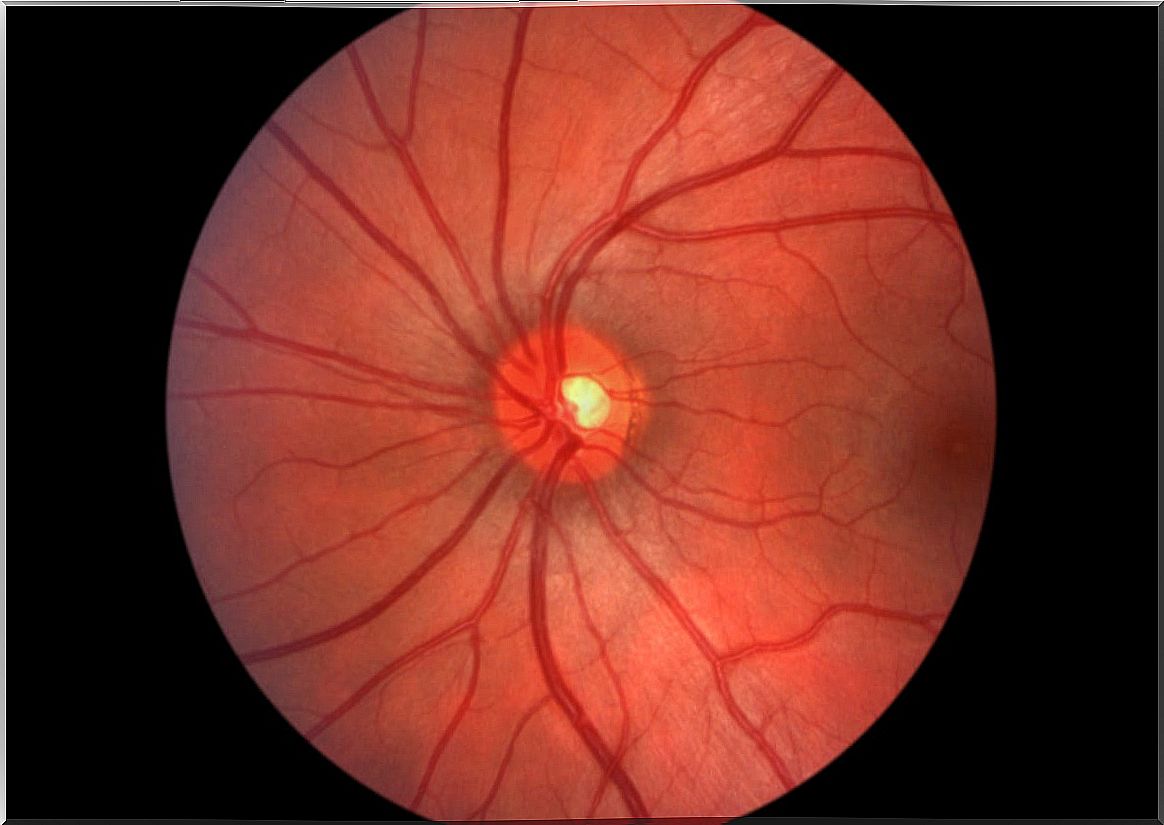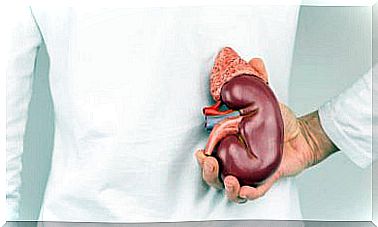What Is Papilledema (papilledema)?
Papilledema is a pathology that occurs in the eye. It is also called papilledema . It consists in the fact that the optic nerve, in its area closest to the retina, becomes inflamed. This is due to an increase in intracranial pressure.
This pathology can be asymptomatic or affect vision. The problem is that it hides serious health problems, such as a brain tumor. Therefore, in this article we explain everything you need to know.
What is papilledema?
The papilla edema, as we have already mentioned, consists in that the optic disc of the eye becomes inflamed. Most commonly, this occurs in both eyes at the same time, in the form of bilateral edema around the optic disc.
This pathology has its origin in intracranial hypertension. The skull is a fixed bone structure, within which we find different organs and substances. One of them is cerebrospinal fluid. When something inside this box of bones increases in volume, there is an increase in pressure.
Papilledema arises, then, when intracranial pressure rises above 200 millimeters of water. This increase may be due to a mass or tumor. Similarly, it may respond to an increase in the amount of cerebrospinal fluid.

Possible causes
As we just noted, the cause of papilledema is cranial hypertension. This, in turn, increases due to the amount of cerebrospinal fluid or the presence of abnormal masses in the brain.
These two situations are frequent in different scenarios. When we speak of abnormal masses, we refer to tumors, abscesses derived from an infection or blood due to hemorrhage.
However, according to a study published in the journal Neurology Supplements, the most common cause of papilledema is idiopathic intracranial hypertension. This means that the pressure increases, but the underlying cause that causes it is unknown.
In other cases, it may be due to meningitis or encephalitis. In an article by the Acta Neurológica Colombiana, they state that it can also be a symptom of Wernicke’s disease. Other less common origins include the following:
- Guillain Barre syndrome.
- Hypervitaminosis A.
- Spinal cord tumors.
- Superior vena cava syndrome.
What are the symptoms of papilledema?
The symptoms of papilledema are variable. At first it is common for it to be asymptomatic and the lesion can only be seen when performing an eye fundus. However, as it progresses, damage to the optic nerve fibers carries obvious signs.
In this way, vision is affected. Vision may be blurred, double or even disappear completely for a few seconds. Many patients experience sensitivity to light contrast.
Most vision loss episodes last a few seconds. Furthermore, intracranial hypertension also produces symptoms on its own. Headache, nausea, and vomiting are common.
The headache is strongest when waking up in the morning and tends to get better during the day. In cases where the cause is meningitis, nuchal stiffness behind the neck may add up.
How is it treated?
The main thing when treating papilledema is to eliminate the cause of intracranial hypertension. It is important to keep in mind that this is a medical emergency. When based on idiopathic hypertension, the measures consist of reducing the cerebrospinal fluid.
For this, according to the Chilean Journal of Neurosurgery, diuretics such as mannitol or furosemide can be used. Weight loss can be beneficial, as can fluid and salt restriction.
To help the cerebrospinal fluid circulate properly, it is also recommended to place the head of the bed slightly elevated. In the event that none of these measures work, it may be necessary to move toward surgery.
The surgical approach consists of performing a lumbar puncture to help evacuate some of the fluid. Finally, if the cause is an infection, antibiotics should be administered, as if there is an abscess that arose from bacterial colonization.

To remember about papilledema
What we must remember about papilledema is that it is a pathology that affects the optic nerve. It is produced by an increase in intracranial pressure that responds to many different situations, but which usually has as a common denominator the increase in pressure within the skull.
One of the most common causes is idiopathic intracranial hypertension. However, brain tumors, bleeding, and infections are also triggers. Papilledema should be treated as a medical emergency to avoid irreparable damage to vision.









